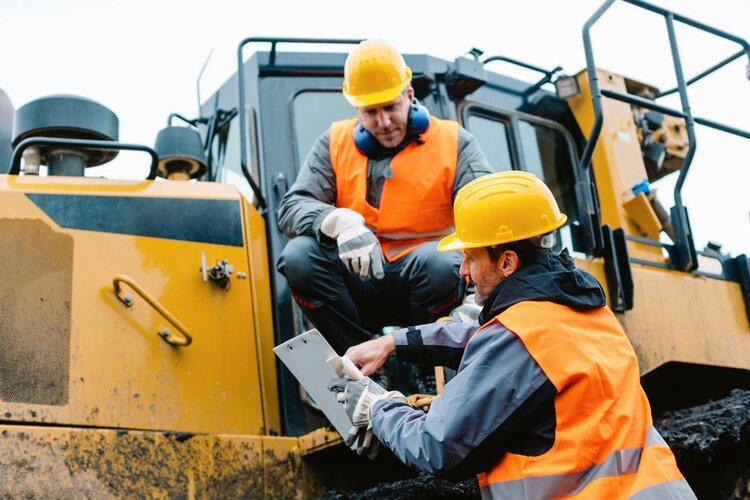Guest blog by Mark Compton, Executive Director, American Exploration & Mining Association
As published originally in the Duluth News Tribune, used with permission.
From where does milk come? Regrettably, for too many, the answer is, “From the grocery store, of course!” It seems the cow’s vital role in the supply chain is often overlooked.
As a society, we don’t give much thought to the origins of the products we depend on every day. We may notice if something is made in America or abroad, but even if it is manufactured here, from where did the raw materials — the minerals and metals — come?
Far too often, the answer is from a foreign country and usually one with a far lower environmental ethos than ours.
We have heard a lot over the years about the importance of energy independence, but it is equally important that we be minerals independent.
Minerals and metals are the building blocks for everything from infrastructure and health care to national defense, clean energy, and electric vehicles. This necessitates a reliable domestic supply chain.
Unfortunately, a lack of access to economically viable mineral deposits and an inefficient federal permitting system leave our nation vulnerable.
According to the U.S. Geological Survey, the United States is 100% reliant on imports for 17 mineral commodities and greater than 50% reliant on imports for another 29 — despite our nation having tremendous mineral wealth. Our mineral dependency is at a record high, and it comes with serious consequences. Most recently, the COVID-19 pandemic laid bare the vulnerabilities that exist in critical U.S. supply chains, including our reliance on imported minerals.
Securing our supply chains is a bipartisan effort, evidenced by the attention our dangerous mineral import reliance has received from both the Donald Trump and Joe Biden administrations.
President Biden in February issued an executive order to secure America’s supply chains, directing agencies across the federal government to immediately evaluate supply-chain risks in four specific areas: semiconductor manufacturing, high-capacity batteries, critical minerals, and pharmaceuticals. It requires sector-specific reviews over the next year, specifically the defense, information communications technology, energy, transportation, public health, and food sectors. The order also directs continued work pursuant to President Trump’s executive order on “Addressing the Threat to the Domestic Supply Chain From Reliance on Critical Minerals From Foreign Adversaries and Supporting the Domestic Mining and Processing Industries.”
If we are going to “build back better,” as Biden vows, by addressing our crumbling infrastructure, revitalizing domestic manufacturing, tackling climate change by developing clean-energy infrastructure, and pushing greater production of electric vehicles, these supply-chain realities must be considered. Demand for metals used in electric vehicles is expected to sharply rise as automakers plan major expansions of electric-vehicle production. Thankfully, the aforementioned executive orders give our critical supply-chain issues, including minerals, the attention they deserve.
The challenge our domestic minerals industry faces is the acknowledgment that our mineral supply chain issues run counter to actions taken by the Biden administration and Congress to restrict access to mineral deposits. Executive orders pausing an already lengthy permitting process, the “30 by 30” initiative to preserve 30% of the nation’s lands and waters by 2030, and legislation banning mining on millions of acres of federal land will discourage exploration, development, and production of minerals in the U.S., increase our reliance on foreign countries, and make “build-back-better” priorities impossible to achieve.
Mineral deposits are unique geologic phenomena. In a 1999 report, the National Research Council of the National Academy of Sciences recognized just how rare mineral deposits are: “Only a very small portion of Earth’s continental crust (less than 0.01%) contains economically viable mineral deposits. Thus, mines can only be located in those few places where economically viable deposits were formed and discovered.”
In order to secure our supply chains, we must have access to search for and responsibly develop viable mineral deposits and be able to permit projects in a timely manner. Keeping lands open to exploration and development improves the odds of finding the “needle in the haystack” mineral deposit. Unfortunately, already more than half of federal lands are off limits to mining, and the continuous efforts to further restrict access put American workers and the mining industry on the sideline when mineral demand is set to skyrocket to meet the Biden administration’s green-energy objectives.
Fortunately, this is not an either/or proposition. Mining and environmental protection are not mutually exclusive. We can be pro-mining while also being pro-environment. Federal and state agencies’ current environmental-protection requirements for minerals provide effective and comprehensive protection that safeguards all aspects of the environment, including water resources, wildlife, special status species, air quality, cultural resources, soils, vegetation, and visual resources.
Furthermore, current federal and state financial-assurance programs guarantee mines will be reclaimed. The bottom line is that, in the U.S., we mine with the best environmental protections and the most robust worker safety standards in the world.
As President Biden noted in his recent executive order, “Resilient American supply chains will revitalize and rebuild domestic manufacturing capacity, maintain America’s competitive edge in research and development, and create well-paying jobs. They will also support small businesses, promote prosperity, advance the fight against climate change, and encourage economic growth in communities of color and economically distressed areas.”
Mined products are key to the advanced, technological, and more healthful existence we all enjoy. Like food and water, minerals are essential, and it’s more important than ever for the U.S. to responsibly utilize our own resources. Securing our domestic mineral supply chains is essential for our environment, our communities, and all Americans.
President Biden also issued a “Buy American” executive order “to support manufacturers, businesses, and workers to ensure that our future is made in all of America by all of America’s workers.”
So, let’s give proper credit to the cows that produce our milk. While we’re at it, let’s recognize the miner who makes our everyday life possible. After all, if it cannot be grown, it has to be mined. As supply-chain realities dictate, we can only make it here if we mine it here.
Mark Compton is executive director of the American Exploration and Mining Association (miningamerica.org), a 126-year-old, 1,700-plus-member national association based in Spokane Valley, Washington. It advocates for the minerals industry. He wrote this for the News Tribune.
If you’re looking to make a career change, MRC can help connect with us or submit your resume.

